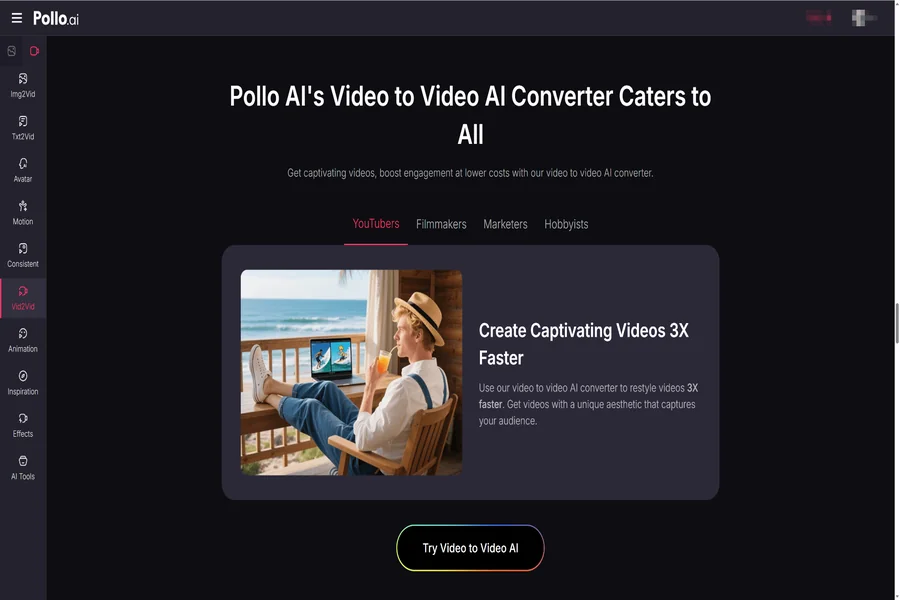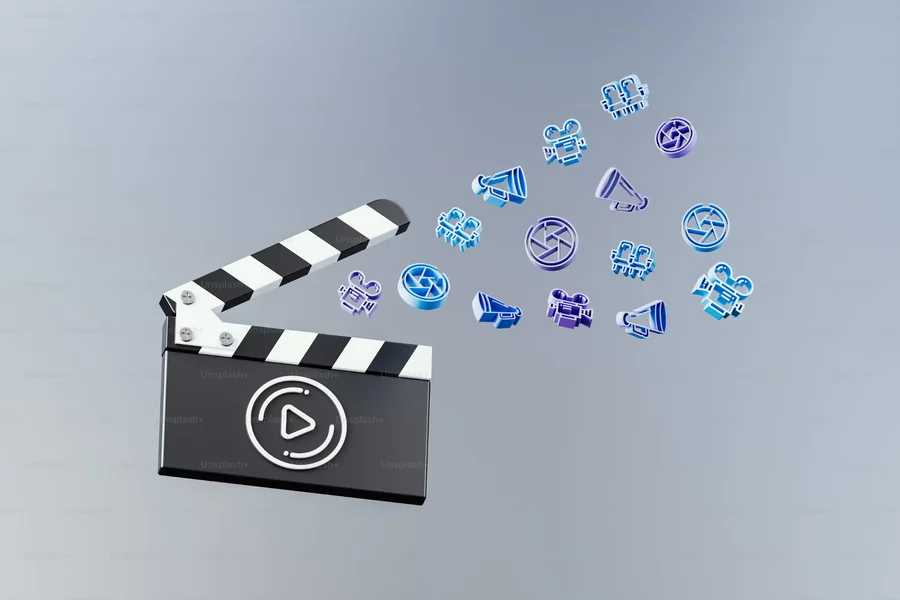In the ever-evolving landscape of digital content creation, video remains the most engaging medium across social platforms, marketing campaigns, and personal expression. But as the internet becomes increasingly saturated with content, standing out requires more than just good filming techniques. Enter AI video-to-video converters – powerful tools that can transform ordinary footage into visually striking content with artistic styles and effects that captivate viewers and elevate storytelling.
The Creative Revolution in Video Transformation
Remember when applying a simple filter to a photo felt revolutionary? We’ve come remarkably far since those days. Today’s AI-powered video transformation tools represent a quantum leap in creative possibilities, allowing content creators to reimagine their footage in ways previously accessible only to professional studios with massive budgets and specialized expertise.
This accessibility has sparked a creative renaissance across platforms like TikTok, Instagram, and YouTube, where creators experiment with visual styles that transform everyday moments into artistic expressions that stand out in crowded feeds.
Technology Behind the Magic
The technology powering these transformations is genuinely remarkable. Modern AI video converters use sophisticated neural networks – specifically generative adversarial networks and diffusion models – trained on vast datasets of visual styles and patterns.
When you feed your video into these systems, they analyze each frame, identifying objects, people, movements, and scenes. Then, they apply the selected style while maintaining temporal consistency – ensuring the transformation remains coherent from frame to frame without flickering or inconsistencies.
The most advanced systems preserve the essence of your original content – the movements, expressions, and key visual elements – while reimagining the aesthetic presentation. This balance between transformation and preservation is what makes these tools so powerful for storytelling.
Exploring the Spectrum of Visual Transformations
The range of available transformations spans from subtle enhancements to complete stylistic overhauls:
Animation Styles
One of the most popular categories transforms live footage into various animation styles. Your videos can take on the appearance of:
- Anime: With bold lines, expressive features, and distinctive color palettes reminiscent of Japanese animation
- 3D Animation: Pixar-inspired looks with dimensional rendering and characteristic lighting
- Claymation: The charming, textured appearance of stop-motion clay animation
- Cartoon: Classic hand-drawn animation aesthetics from various eras
Artistic Interpretations
Beyond animation, many converters offer artistic styles inspired by art movements and techniques:
- Oil Painting: Textured brushstrokes and rich color blending reminiscent of classical paintings
- Watercolor: Soft, flowing effects with characteristic transparency and bleeding edges
- Pop Art: Bold colors and patterns inspired by artists like Warhol and Lichtenstein
- Pencil Sketch: Monochromatic line art that transforms footage into moving drawings
Technical and Era-Specific Effects
Other filters recreate technical or historical visual aesthetics:
- VHS: The nostalgic look of 1980s home videos with characteristic tracking lines and color shifts
- Film Noir: Dramatic black and white with heightened contrast and moody shadows
- 8-bit/Pixel Art: Retro gaming aesthetics with limited color palettes and blocky pixels
- Cyberpunk/Neon: Futuristic looks with glowing elements and distinctive color schemes
Among the platforms offering these transformative capabilities, Pollo AI has emerged as a noteworthy option, particularly for creators seeking an intuitive interface combined with high-quality results. Their video-to-video tool offers an impressive range of filters that maintain the integrity of original movements while applying consistent style transformations.
Creative Applications Across Different Fields

The applications for these tools extend far beyond casual social media posts:
Content Creation and Marketing
For brands and influencers, style transformations offer a way to repurpose existing footage into multiple visually distinct pieces, extending the life of marketing assets while keeping content fresh and engaging.
“We’ve seen engagement increase by up to 35% when using stylized video content in our campaigns,” notes marketing strategist Alicia Ramirez. “There’s something about these visual transformations that makes viewers pause their scroll and pay attention.”
Education and Explanation
Educators and explainer channels are using style transformations to make complex topics more approachable and engaging. A standard lecture or demonstration can be transformed into an animated sequence that holds attention more effectively.
Filmmaking and Storytelling
Independent filmmakers are using these tools to achieve distinctive visual sequences that would be prohibitively expensive through traditional means. Dream sequences, flashbacks, or altered states of consciousness can be visually distinguished through style transformations.
Personal Memory Enhancement
Even personal videos – from travel memories to family gatherings – can be transformed into more evocative keepsakes through thoughtful style application.
Getting Started
If you’re interested in exploring video transformation, platforms like Pollo AI offer user-friendly entry points with intuitive interfaces that don’t require technical expertise. Many services provide free trials or basic transformation options before committing to paid plans.
The barrier to entry has never been lower, making now the perfect time to experiment with how these tools might enhance your visual storytelling.
Best Practices for Effective Video Transformation
To get the most from AI video converters, consider these practical tips:
1. Start with High-Quality Source Material
While AI can work wonders, beginning with well-lit, properly exposed footage will yield the best results. Extreme low-light conditions or very shaky footage may not transform as effectively.
2. Consider Your Content’s Purpose
Choose styles that enhance rather than distract from your message. A product demonstration might benefit from subtle enhancements, while a music video could handle more dramatic transformations.
3. Test Different Styles on Short Clips
Before committing to transforming a longer video, test your chosen style on a brief segment to ensure it achieves your creative vision.
4. Maintain Visual Consistency
For multi-clip projects, apply the same transformation settings across all segments to maintain a cohesive visual language throughout your content.
5. Respect Copyright and Artistic Integrity
While these tools make it easy to mimic famous visual styles, be mindful of copyright considerations, especially for commercial applications.
The Future of Video Transformation
As AI continues to advance, we can expect even more sophisticated transformation capabilities:
Real-Time Transformation
Future iterations will likely enable live transformation during video calls or streaming, opening new possibilities for interactive content.
Custom Style Training
More advanced tools will allow users to define custom styles based on specific reference images or videos, rather than selecting from pre-defined filters.
Selective Transformation
Emerging capabilities will enable transforming only specific elements within a video while leaving others unchanged – like stylizing only a person while keeping the background realistic.
Conclusion
AI video-to-video converters represent a significant leap forward in creative technology, placing powerful visual tools in the hands of creators at all levels. From casual content creators to professional marketers, these tools are expanding the visual vocabulary available to anyone with a story to tell.
As you explore these capabilities, remember that the technology itself is just a tool – the most compelling transformations happen when technical capabilities meet creative vision. The most successful transformed videos aren’t just visually interesting; they use style transformations purposefully to enhance the emotional impact or narrative clarity of the content.
Whether you’re looking to stand out on social media, create more engaging educational content, or simply explore new creative directions, AI video transformation tools are making it possible to achieve professional-quality visual styles with unprecedented ease. The creative possibilities are limited only by your imagination.




